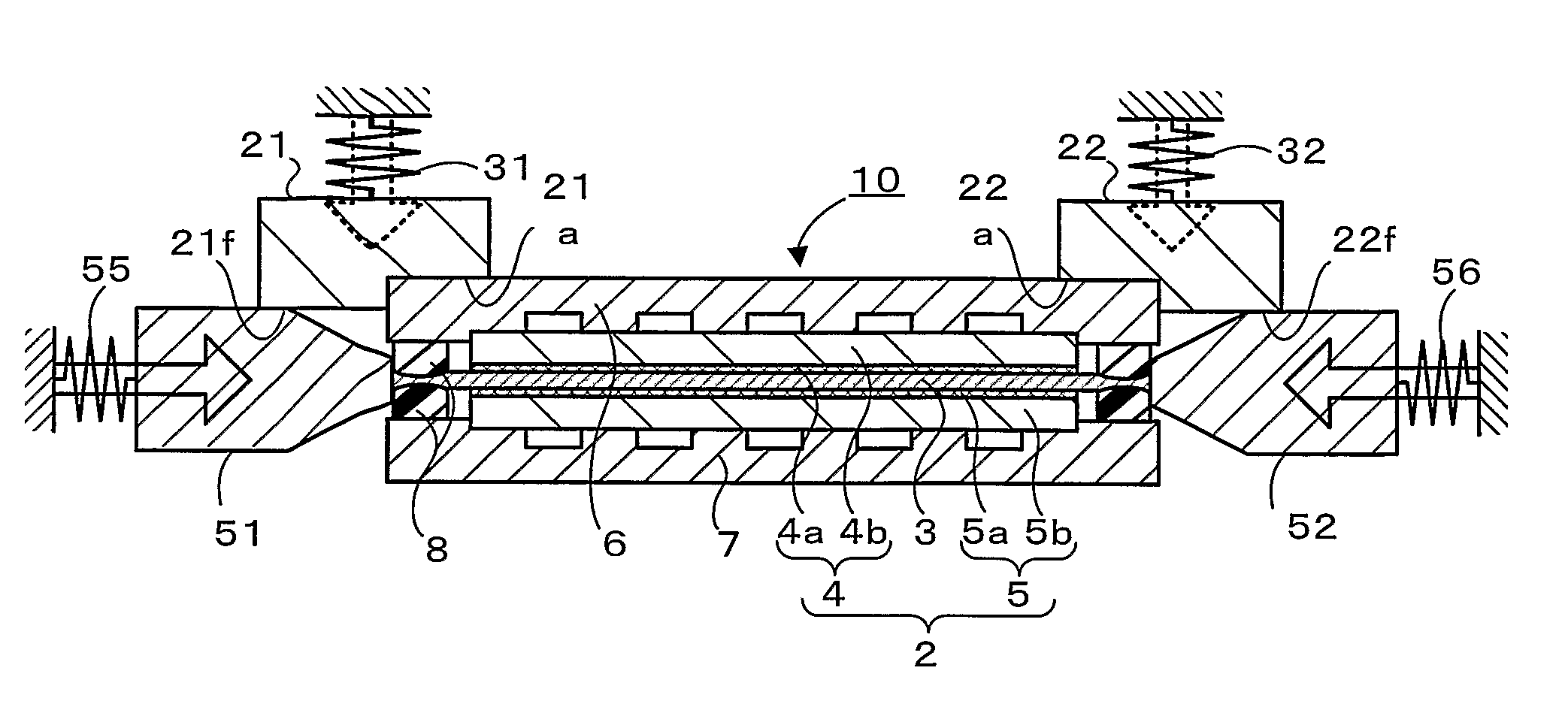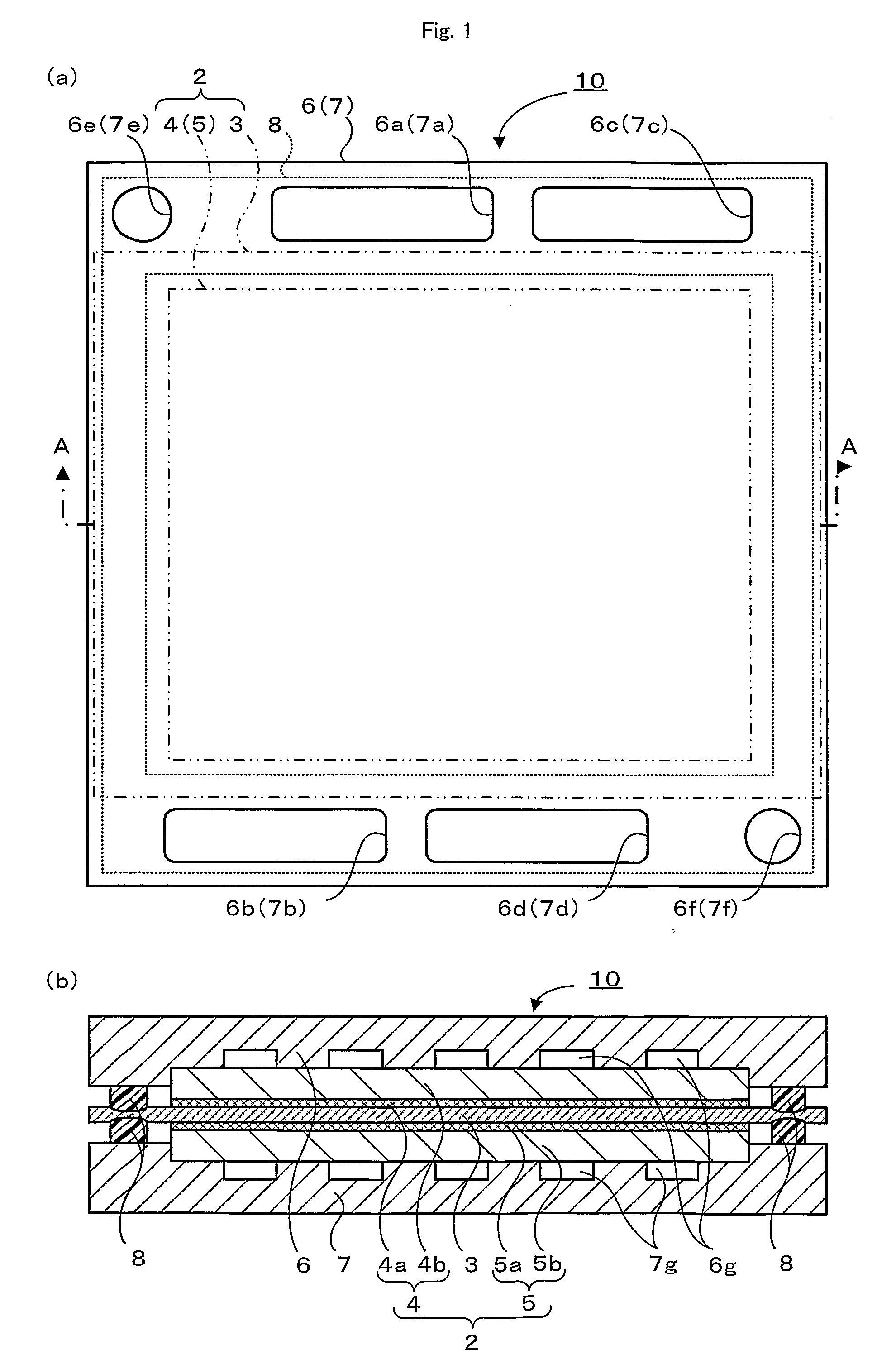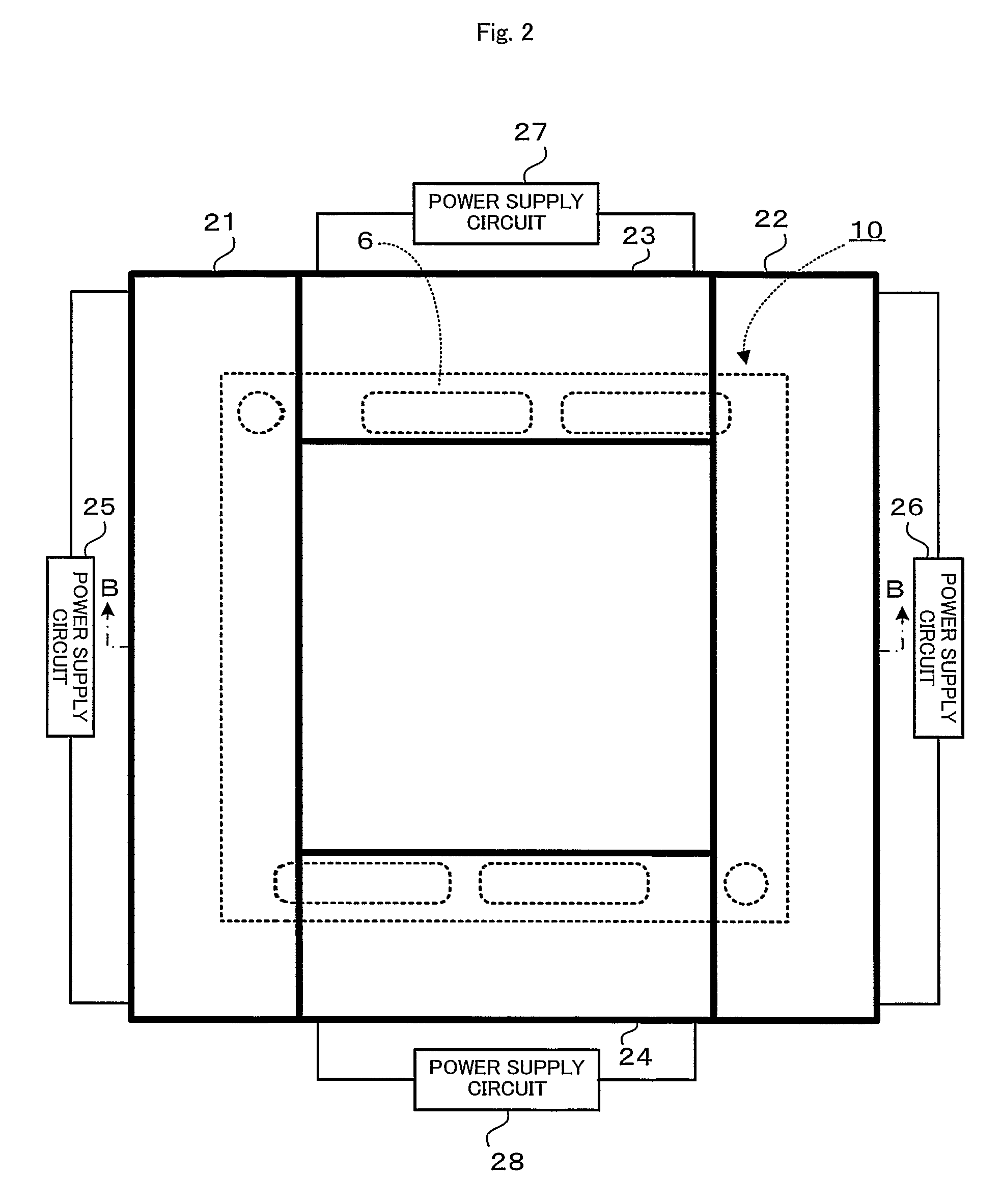Fuel cell disassembly method
a technology of disassembly and fuel cell, which is applied in the direction of secondary cell servicing/maintenance, insulating conductor/cable, and primary cell maintenance/service, etc. it can solve the problems of difficulty in effectively disassembling the fuel cell, accidental cut in the middle of the linear member, etc., and achieves convenient and facilitates the separation of the pair of separators
- Summary
- Abstract
- Description
- Claims
- Application Information
AI Technical Summary
Benefits of technology
Problems solved by technology
Method used
Image
Examples
first embodiment
[0031]FIG. 1 schematically illustrates the structure of a fuel cell 10 in a first embodiment of the invention. FIG. 1(a) is a plan view, and FIG. 1(b) is a sectional view taken on a line A-A of FIG. 1(a).
[0032] The fuel cell 10 of this embodiment is a polymer electrolyte fuel cell and includes, as main constituents, a membrane electrode assembly (hereafter referred to as MEA) 2 having an electrolyte membrane 3 interposed between a pair of electrodes 4 and 5, sealing layers 8 located to surround the outer circumference of the MEA 2, and a pair of separators 6 and 7 arranged across the MEA 2 and bonded to the sealing layers 8. The fuel cell 10 is a unit cell having an electromotive force in a range of about 0.6 to 0.8 V. A large number of the fuel cells 10 are tightly laid one upon another to form a direct current power source of several hundred volts as a power supply of, for example, a drive motor of the vehicle.
[0033] The MEA 2 has the electrolyte membrane 3 located between the f...
second embodiment
[0046] A second embodiment of the invention regards a fuel cell stack 70, which is a layered body of plurality of the fuel cells 10. FIG. 12 is a perspective view showing the fuel cell stack 70 in the state of power generation in the second embodiment of the invention. FIG. 13 is a sectional view taken on a line B-B of FIG. 12. In the illustration of FIGS. 12 and 13, the respective constituents of the fuel cells 10 are expressed by the like numerals and symbols to those of the first embodiment.
[0047] As shown in FIG. 12, the fuel cell stack 70 has a cell laminate of the multiple fuel cells 10 of the first embodiment, which are closely and tightly layered one upon another, and end plates 73 and 74 that are arranged across the cell laminate via insulator plates 71 and 72 and are pressed in a compression direction with a pressing force F1 applied by a pressure device (not shown). The fuel cell stack 70 is used as a power source of several hundred volts. The end plate 73 shown on the f...
third embodiment
[0055] A third embodiment of the invention regards a method of disassembling the fuel cell 10 according to the requirements. FIG. 15 shows arrangement of heat removers 121 through 124 set on the fuel cell 10. FIG. 15(a) is a plan view and FIG. 15(b) is a sectional view taken on the line F-F of FIG. 15(a). The like elements to those of the first embodiment are expressed by the like numerals and are not specifically described here. The metal heat removers 121 through 124 of good heat conduction are cooled down to minus several tens ° C. in a freezer and are taken out of the freezer at the time of disassembly of the fuel cell 10. As shown in FIG. 15, the cooled heat removers 121 through 124 are located along four sides of the upper separator 6 of the fuel cell 10, that is, along the sealing layers 8. These heat removers 121 through 124 correspond to the external heat removal means of the present invention. As shown in FIG. 15(b), the heat removers 121 and 122 are formed in substantiall...
PUM
| Property | Measurement | Unit |
|---|---|---|
| Temperature | aaaaa | aaaaa |
| Force | aaaaa | aaaaa |
| Heat | aaaaa | aaaaa |
Abstract
Description
Claims
Application Information
 Login to View More
Login to View More - R&D
- Intellectual Property
- Life Sciences
- Materials
- Tech Scout
- Unparalleled Data Quality
- Higher Quality Content
- 60% Fewer Hallucinations
Browse by: Latest US Patents, China's latest patents, Technical Efficacy Thesaurus, Application Domain, Technology Topic, Popular Technical Reports.
© 2025 PatSnap. All rights reserved.Legal|Privacy policy|Modern Slavery Act Transparency Statement|Sitemap|About US| Contact US: help@patsnap.com



